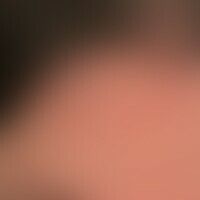Image diagnoses for "Plaque (raised surface > 1cm)", "Face"
117 results with 293 images
Results forPlaque (raised surface > 1cm)Face

Chronic actinic dermatitis (overview) L57.1
Dermatitis chronic actinic: Chronic laminar eczema reaction which is essentially limited to the exposed skin areas Typical of chronic actinic dermatitis and thus distinguishable from a toxic light reaction (type acute solar dermatitis) is the blurred transition (eczematous scattering reactions) from lesional to healthy skin.
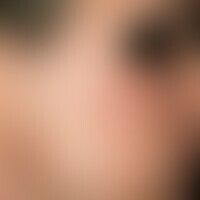
Acne (overview) L70.0
Acne vulgaris (overview): severe clinical picture with inflammatory papules, papulo-pustules and pustules in a 17-year-old patient; increasing course of the disease since 2 years. extensive scarring beginning in the central cheek area. picture of acne vulgaris (type: acne papulo-pustulosa, grade IV). classic indication for systemic isotretinoin therapy!

Melanosis neurocutanea Q03.8
melanosis neurocutanea. multiple, sharply defined, pigmented, black spots, plaques and nodules on head, upper extremities and upper trunk. in the area of the middle and lower trunk there is a large melanocytic nevus. evidence of leptomeningeal melanosis.

Leprosy reaction A30.8
Leprosy reaction type I: Cell-mediated inflammatory (flare-up) reaction in existing leprosy foci, here lepromatous leprosy.

Infant haemangioma (overview) D18.01
Haemangioma of the infant (series: 3-month-old infant); initial findings of a large hemangioma with little elevation.
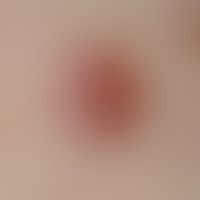
Basal cell carcinoma (overview) C44.-
Basal cell carcinoma (overview): Nodular basal cell carcinoma with a shiny, smooth surface interspersed with bizarre telangiectases.
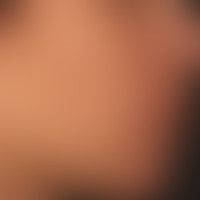
Acne (overview) L70.0
Acne papulopustulosa: disseminated follicular papules, pustules and retracted scars; recurrent course.

Contagious impetigo L01.0
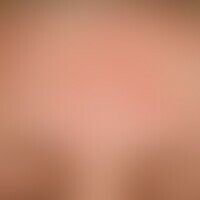
Lupus erythematosus subacute-cutaneous L93.1
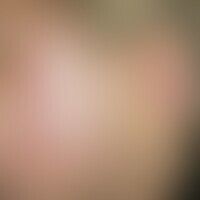
Psoriasis vulgaris L40.00
psoriasis vulgaris. plaque psoriasis. solitary, chronically inpatient, intermittent, sharply delineated, reddish, silvery scaly plaques localized in the face in a 6-year-old girl. erythrosquamous plaques also appear on the extensor sides of the arms and legs. symmetrical infestation. positive family history.

Lupus erythematodes chronicus discoides L93.0
Lupus erythematodes chronicus discoides: persistent, progressive skin changes in a 67-year-old patient for 15 years; large, hyperesthetic, red, centrally ulcerated plaque.





